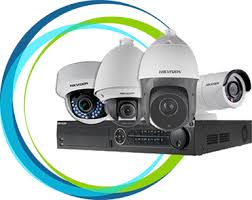In the digital age, where security threats loom large and safety concerns are at the forefront of our minds, video surveillance systems stand as stalwart guardians, providing an extra layer of protection for our homes, businesses, and public spaces. These systems offer a watchful eye that tirelessly monitors our surroundings, deters criminal activity, and provides valuable evidence in the event of an incident. However, the effectiveness of video surveillance systems relies not only on the quality of the cameras but also on the meticulous planning and expertise involved in their installation.
Installing a video surveillance system is a nuanced and multifaceted process that requires careful consideration of various factors to ensure optimal performance and coverage. From selecting the right cameras to strategic placement and seamless integration, each step plays a crucial role in maximizing the effectiveness of the system.
The first step in video surveillance system installation is choosing the appropriate cameras to suit the specific needs and requirements of the premises. Factors such as resolution, field of view, low-light performance, and weather resistance must be taken into account to ensure that the selected cameras are capable of capturing clear and detailed footage under various conditions.
Once the cameras have been selected, the next step is to determine the optimal placement for maximum coverage and effectiveness. This involves conducting a thorough assessment of the property layout and identifying key areas that require monitoring, such as entry points, parking lots, and high-traffic areas. Strategic placement of cameras helps minimize blind spots and ensures comprehensive surveillance of the premises.
Furthermore, integrating the video surveillance system with other security components, such as motion sensors, alarms, and access control systems, is essential for creating a cohesive and robust security infrastructure. This integration enables centralized monitoring and management, allowing for swift responses to security threats and seamless coordination between different security measures.
In addition to physical installation, configuring the software and settings of the video surveillance system is crucial for optimizing performance and functionality. This includes setting up motion detection, adjusting recording settings, configuring remote access, and implementing user permissions to control access to the system.
Moreover, compliance with legal and regulatory requirements governing surveillance practices is essential to ensure the legality and ethicality of the video surveillance system. This includes obtaining necessary permits, respecting privacy laws, and clearly communicating the presence of surveillance cameras to individuals within the monitored area.
While some may attempt to install video surveillance systems themselves, seeking the expertise of professional installers is highly recommended. Professional installers possess the knowledge, skills, and experience necessary to navigate the complexities of installation, ensuring that the system is set up correctly and optimized for maximum effectiveness.
In conclusion, video surveillance system installation is a vital component of modern security strategies, providing invaluable protection for homes, businesses, and public spaces. By employing careful planning, technical proficiency, and professional expertise, individuals and organizations can create a robust security infrastructure that enhances safety and security for all.


No comments yet